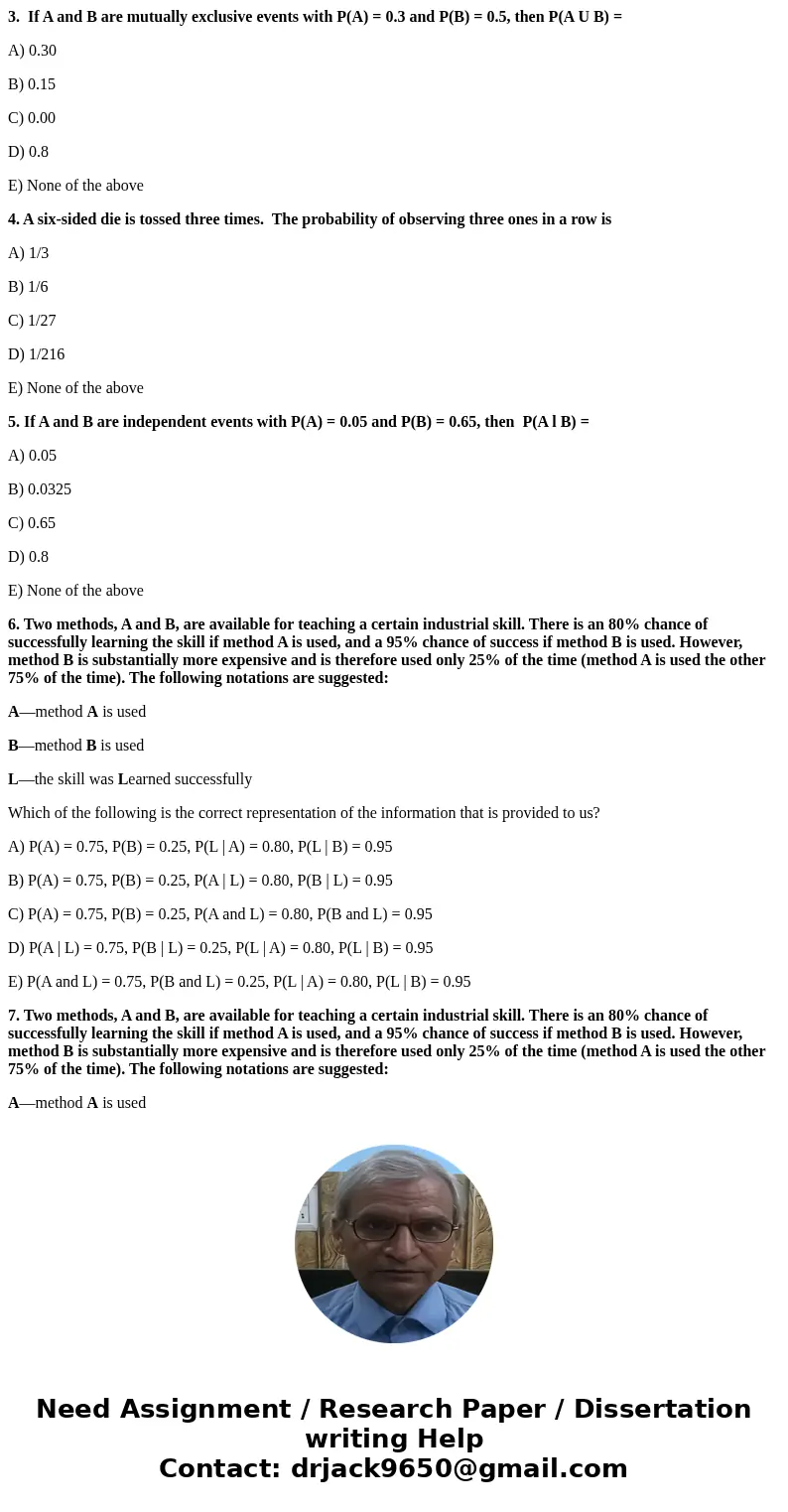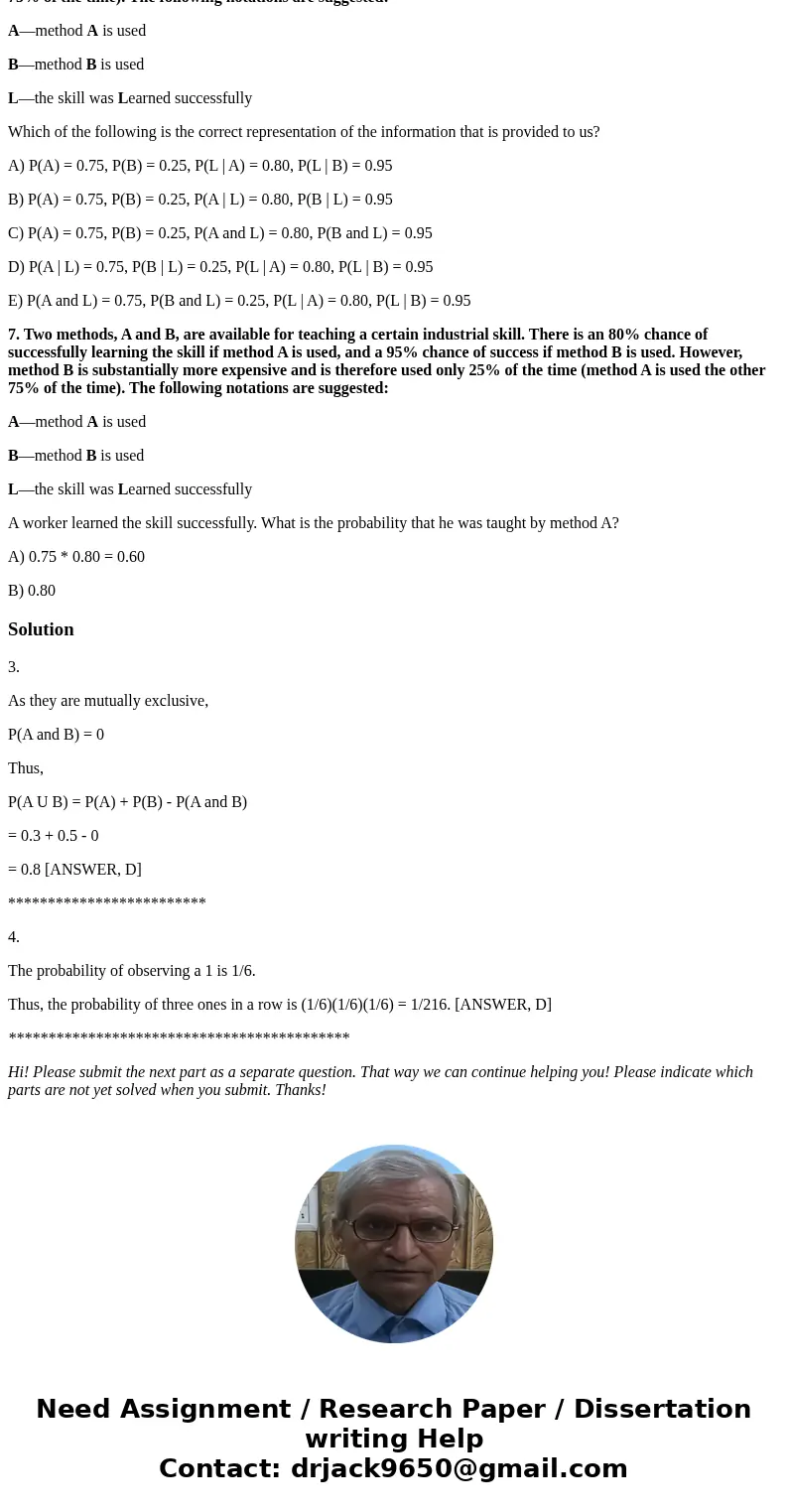3 If A and B are mutually exclusive events with PA 03 and P
3. If A and B are mutually exclusive events with P(A) = 0.3 and P(B) = 0.5, then P(A U B) =
A) 0.30
B) 0.15
C) 0.00
D) 0.8
E) None of the above
4. A six-sided die is tossed three times. The probability of observing three ones in a row is
A) 1/3
B) 1/6
C) 1/27
D) 1/216
E) None of the above
5. If A and B are independent events with P(A) = 0.05 and P(B) = 0.65, then P(A l B) =
A) 0.05
B) 0.0325
C) 0.65
D) 0.8
E) None of the above
6. Two methods, A and B, are available for teaching a certain industrial skill. There is an 80% chance of successfully learning the skill if method A is used, and a 95% chance of success if method B is used. However, method B is substantially more expensive and is therefore used only 25% of the time (method A is used the other 75% of the time). The following notations are suggested:
A—method A is used
B—method B is used
L—the skill was Learned successfully
Which of the following is the correct representation of the information that is provided to us?
A) P(A) = 0.75, P(B) = 0.25, P(L | A) = 0.80, P(L | B) = 0.95
B) P(A) = 0.75, P(B) = 0.25, P(A | L) = 0.80, P(B | L) = 0.95
C) P(A) = 0.75, P(B) = 0.25, P(A and L) = 0.80, P(B and L) = 0.95
D) P(A | L) = 0.75, P(B | L) = 0.25, P(L | A) = 0.80, P(L | B) = 0.95
E) P(A and L) = 0.75, P(B and L) = 0.25, P(L | A) = 0.80, P(L | B) = 0.95
7. Two methods, A and B, are available for teaching a certain industrial skill. There is an 80% chance of successfully learning the skill if method A is used, and a 95% chance of success if method B is used. However, method B is substantially more expensive and is therefore used only 25% of the time (method A is used the other 75% of the time). The following notations are suggested:
A—method A is used
B—method B is used
L—the skill was Learned successfully
A worker learned the skill successfully. What is the probability that he was taught by method A?
A) 0.75 * 0.80 = 0.60
B) 0.80
Solution
3.
As they are mutually exclusive,
P(A and B) = 0
Thus,
P(A U B) = P(A) + P(B) - P(A and B)
= 0.3 + 0.5 - 0
= 0.8 [ANSWER, D]
*************************
4.
The probability of observing a 1 is 1/6.
Thus, the probability of three ones in a row is (1/6)(1/6)(1/6) = 1/216. [ANSWER, D]
*******************************************
Hi! Please submit the next part as a separate question. That way we can continue helping you! Please indicate which parts are not yet solved when you submit. Thanks!


 Homework Sourse
Homework Sourse